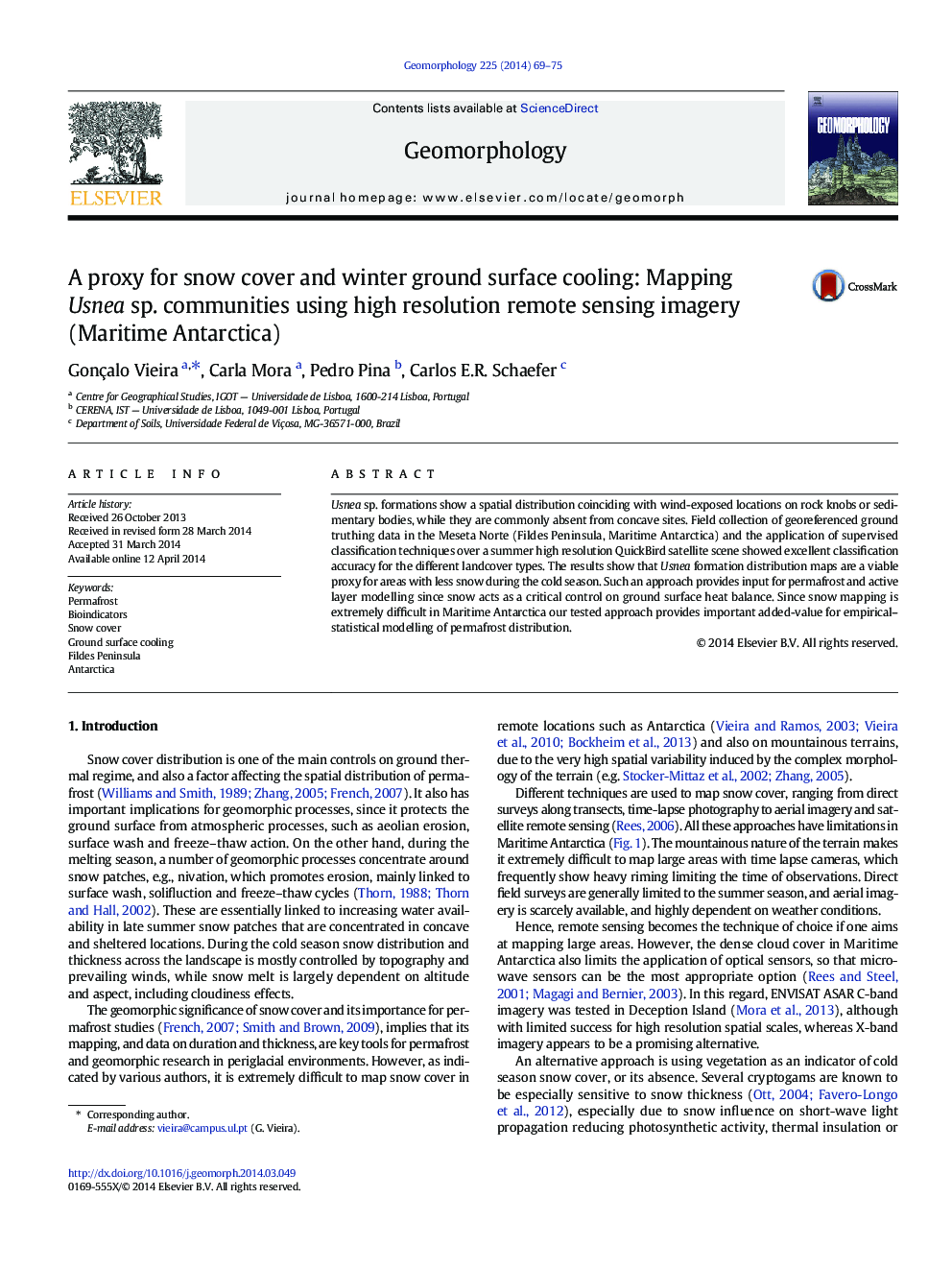| Article ID | Journal | Published Year | Pages | File Type |
|---|---|---|---|---|
| 4684468 | Geomorphology | 2014 | 7 Pages |
•Usnea sp. formations are good bioindicators of snow conditions during the cold season.•High resolution QuickBird imagery allows high accuracy for mapping Usnea formations.•Usnea formation maps allow identifying of snow free areas during the cold season.•Usnea maps allow detecting areas of better cold season surface–ground coupling.
Usnea sp. formations show a spatial distribution coinciding with wind-exposed locations on rock knobs or sedimentary bodies, while they are commonly absent from concave sites. Field collection of georeferenced ground truthing data in the Meseta Norte (Fildes Peninsula, Maritime Antarctica) and the application of supervised classification techniques over a summer high resolution QuickBird satellite scene showed excellent classification accuracy for the different landcover types. The results show that Usnea formation distribution maps are a viable proxy for areas with less snow during the cold season. Such an approach provides input for permafrost and active layer modelling since snow acts as a critical control on ground surface heat balance. Since snow mapping is extremely difficult in Maritime Antarctica our tested approach provides important added-value for empirical–statistical modelling of permafrost distribution.
